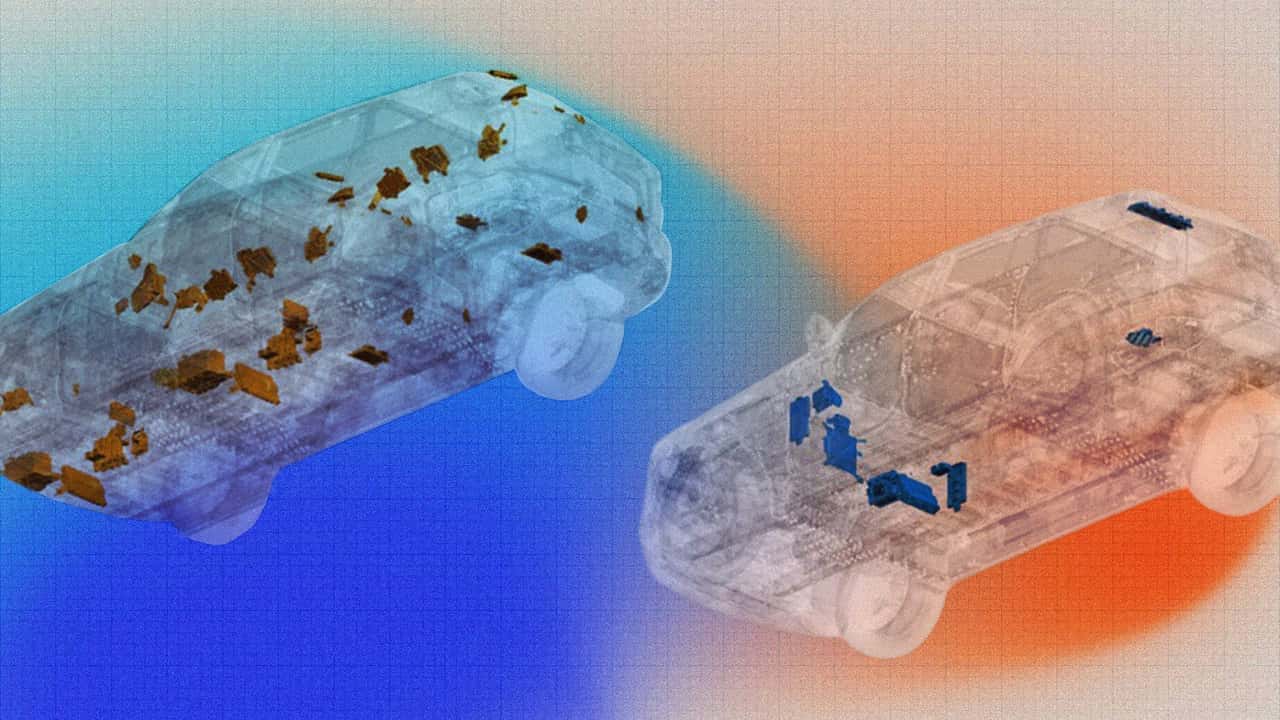Top Stories
GM Unveils Game-Changing Tech for Gas Cars, EVs by 2028

BREAKING: General Motors (GM) has just announced a revolutionary shift in automotive technology that will transform both gas-powered and electric vehicles. At the GM Forward tech event in New York City, officials revealed their plans to implement a groundbreaking centralized compute architecture by 2028, starting with the much-anticipated Cadillac Escalade IQ.
GM’s new approach will streamline vehicle systems, moving away from traditional, complex wiring to a simplified, software-driven design. This means fewer parts, reduced maintenance costs, and the potential elimination of standard fuse boxes. “We’ve moved away from standard fuse boxes,” declared Gary Cygan, GM’s Director of Platform Engineering. “The aggregators handle those functions instead, leading to quicker feature rollouts.”
This innovative system promises to connect all vehicle functions—ranging from safety systems to infotainment—under a single software umbrella, which drastically reduces the complexity of car manufacturing. By integrating both electric and gas vehicles under this unified architecture, GM aims to lead the industry in efficiency and technological advancement.
The implications are significant: GM’s new platform will allow for rapid software updates, delivering up to ten times more updates compared to previous systems. “It means vehicles that are always up to date, delivering 10 times more software updates than our previous system,” said David Richardson, GM’s Senior Vice President of Software and Services Engineering. This leap toward a smarter car will enhance user experience, enabling features like self-driving capabilities that react in milliseconds.
However, GM faces challenges in balancing the needs of traditional internal combustion engine (ICE) vehicles with those of electric cars. Cygan noted that while EVs can utilize existing battery cooling systems, finding a suitable cooling solution for gas cars remains complex. “On an ICE vehicle, where do you get coolant for it, because the coolant in the engine system is much warmer?”
Despite these hurdles, GM is determined to implement this architecture across its entire lineup, including current-generation vehicles. This adaptability could significantly enhance repairability and reduce diagnostic complexities, providing consumers with a more reliable experience.
As GM pivots to a future that heavily features robotics, AI, and advanced software, the transition is expected to provide consumers with vehicles that not only meet current demands but also anticipate future needs. The centralized compute architecture is a crucial step towards making gas cars more efficient while maintaining their relevance in an increasingly electric vehicle market.
Stay tuned for further updates as GM prepares to redefine the automotive landscape, blending the best of both worlds—gas and electric—into a seamless driving experience.
-

 Health5 days ago
Health5 days agoRare Brain Condition Discovered More Common in New Mexico
-

 Politics6 days ago
Politics6 days agoPrince Andrew Steps Back from Royal Duties Following Epstein Memoir
-

 Entertainment6 days ago
Entertainment6 days agoTrump Commutes George Santos’ Sentence, Sparks Controversy
-

 Sports6 days ago
Sports6 days agoMLS Decision Day 2025: Playoff Spots on the Line as Teams Clash
-

 World6 days ago
World6 days agoYoung Driver Dies in Collision with Box Truck in El Cajon
-

 Health6 days ago
Health6 days agoRemembering Mary Ingleby: A Life of Love, Teaching, and Music
-

 Science6 days ago
Science6 days agoIdaho State University Launches Haunted Science Laboratory on Oct. 25
-

 Politics6 days ago
Politics6 days agoNavy Veteran Max Quattromani Launches Campaign for Assessor Seat
-

 Lifestyle6 days ago
Lifestyle6 days agoKent Hamilton Named Southeastern Farmer of the Year at Expo
-

 Sports6 days ago
Sports6 days agoSaquon Barkley Reacts to James Franklin’s Dismissal from Penn State
-

 Health4 days ago
Health4 days agoScientists Warn: Human Brain Struggles to Function After Midnight
-

 World6 days ago
World6 days agoHamas to Return Additional Hostage Remains on Friday








